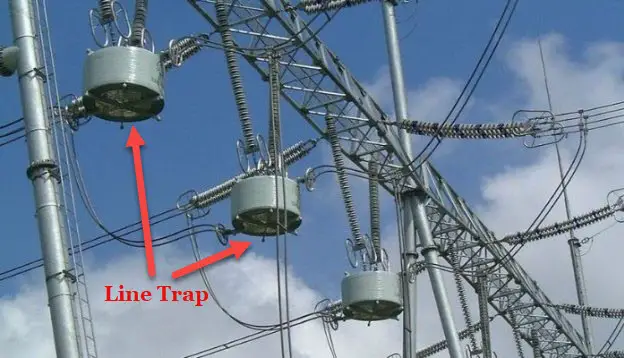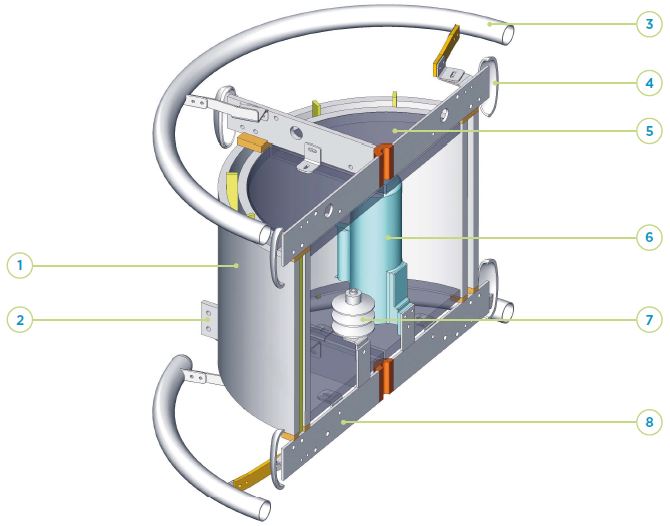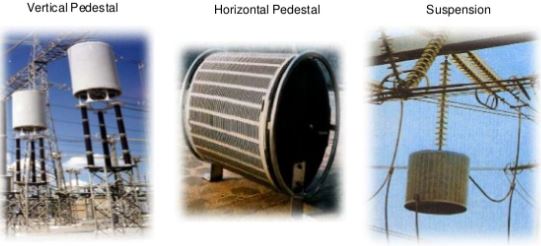Wave trap is a device which prevents the high-frequency carrier signals to enter the substation side. It is also known as line trap. It is connected in series with the transmission line. It is designed to carry the rated power frequency (50 Hz or 60 Hz) current, as well as to withstand the substation fault currents.

The Line Trap consists of a series inductance shunted by a tuning capacitance. It works as a band stop filter. The Line Trap provides a high impedance to carrier frequencies to limit the insertion losses into the substation while providing a low impedance path for the power frequency.

In conjunction with a coupling capacitor (CC), they act as a filter to divert high-frequency carrier signal (in kHz) to/from telecommunication equipment and power frequency signal to/from the substation.

Wave trap Components
1. Main coil
2. Terminal
3. Corona ring
4. Corona cap
5. Bird barrier
6. Tuning pack
7. Surge arrester
8. Winding spider (cross arm)

The main coil is an inductor that is connected directly to the high voltage power frequency line. The tuning pack consists of a capacitor connected across the main coil to tune the line trap to the desired blocking frequency. A surge arrester is used to protect the line trap from damage due to transient over-voltages.
Wave trap mounting options
There are three mounting options for wave traps
1. Vertical Pedestal
2. Horizontal Pedestal
3. Suspension

Wave trap Applications
1. Line Traps are used in power line communications to prevent undue loss of carrier signal power and to minimize
interference from carrier signalling systems on adjacent transmission lines.
2. They are inserted in series in a power transmission line in order to confine the high-frequency carrier signal to the
appropriate line sections.
3. They present a high impedance at the carrier frequency band (40 to 500 kHz) thus preventing signal power loss. In addition, the impedance at the power frequency (50 Hz or 60 Hz) is negligible, in order to avoid interfering with the power transmission.

Wave trap terminal connectors 220 KV.
require 8Nos.